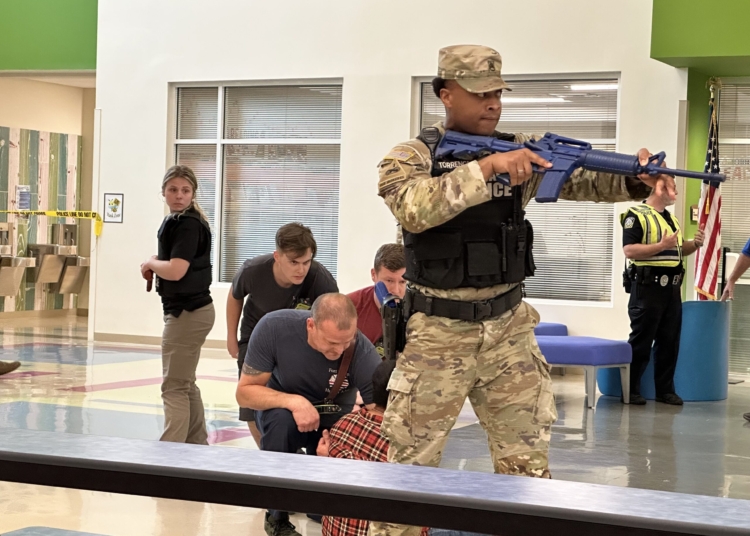This article explores the various training resources that military organizations rely on to ensure preparedness and effectiveness on the battlefield. It discusses the importance of advanced simulation technologies, which allow soldiers to experience realistic combat scenarios without physical risks. It also highlights the significance of live-fire exercises, which enable soldiers to handle real weapons and gain hands-on experience. Physical fitness training is emphasized as the foundation of military training, focusing on strength, endurance, and agility. Survival training is crucial for preparing soldiers to endure and overcome challenging circumstances. Leadership development programs are also essential in training soldiers to become effective leaders. Ultimately, these training resources are crucial in creating capable and prepared military forces.
Ensuring Preparedness: A Look into Military Training Resources That Matter
Introduction
In the ever-changing landscape of global security, military preparedness is of paramount importance. To ensure successful outcomes in potential conflicts or crises, armed forces around the world invest significant resources in training their personnel. This article delves into the essential training resources that military organizations rely on to ensure preparedness and effectiveness on the battlefield. From advanced simulation technologies to rigorous physical training regimes, these resources play a crucial role in shaping the soldiers of tomorrow.
1. Advanced Simulation Technologies
Modern military training has greatly evolved with the introduction of cutting-edge simulation technologies. Virtual simulation allows soldiers to experience realistic combat scenarios without exposing them to physical risks. Simulated training environments can replicate a diverse range of scenarios, from urban warfare to aviation operations and even cyber warfare. With the ability to synthesize real-time information and generate lifelike responses, these simulations provide invaluable training opportunities that help soldiers refine their decision-making skills and situational awareness.
2. Live-Fire Exercises
While virtual simulation can provide a controlled training environment, a crucial element of military preparedness is the ability to handle real weapons and experience live-fire exercises. These exercises allow soldiers to become familiar with the weight, recoil, and accuracy of their weapons in actual combat situations. Live-fire training is often carried out on specialized training ranges, where soldiers practice shooting at targets or maneuvering in dynamic environments. The hands-on experience gained from live-fire exercises enhances muscle memory, confidence, and quick reactions, which are vital attributes in combat scenarios.
3. Physical Fitness Training
Physical fitness is the foundation of military training. Armed forces emphasize the physical resilience of their personnel through rigorous training programs. These programs focus on strength, endurance, and agility, enabling soldiers to effectively perform demanding tasks on the battlefield. Physical fitness training comprises activities such as running, swimming, weightlifting, and cross-fit exercises. In addition to building physical strength, these training regimes instill discipline, mental fortitude, and teamwork in soldiers, fostering the spirit of camaraderie essential for military operations.
4. Survival Training
Preparing soldiers for worst-case scenarios is crucial in military training. Survival training equips soldiers with the skills needed to endure and overcome challenging circumstances. This includes training on wilderness survival, escape and evasion tactics, first aid, and handling captured or detained personnel situations. Survival training ensures that soldiers are mentally and physically prepared to face the unexpected and adapt to hostile environments or adverse conditions, increasing their chances of survival and mission success.
5. Leadership Development
Effective leadership is vital for military organizations to function efficiently and achieve objectives. Leadership development programs focus on training soldiers to take charge, make critical decisions, and foster teamwork. These programs incorporate leadership principles, communication skills, and strategic thinking. Through various training methodologies, such as practical exercises and classroom instruction, soldiers are groomed to become capable leaders who can inspire, motivate, and guide their subordinates under challenging circumstances.
Conclusion
Ensuring military preparedness involves a diverse array of training resources that equip soldiers with the skills, knowledge, and mindset necessary to handle complex and dynamic situations. From advanced simulations that mimic real-world experience to physical fitness regimes that build strength and resilience, these resources are crucial in creating an effective and capable military force. By investing in comprehensive and cutting-edge training programs, armed forces worldwide can enhance their readiness and response capabilities, ultimately safeguarding national security and protecting citizens.












